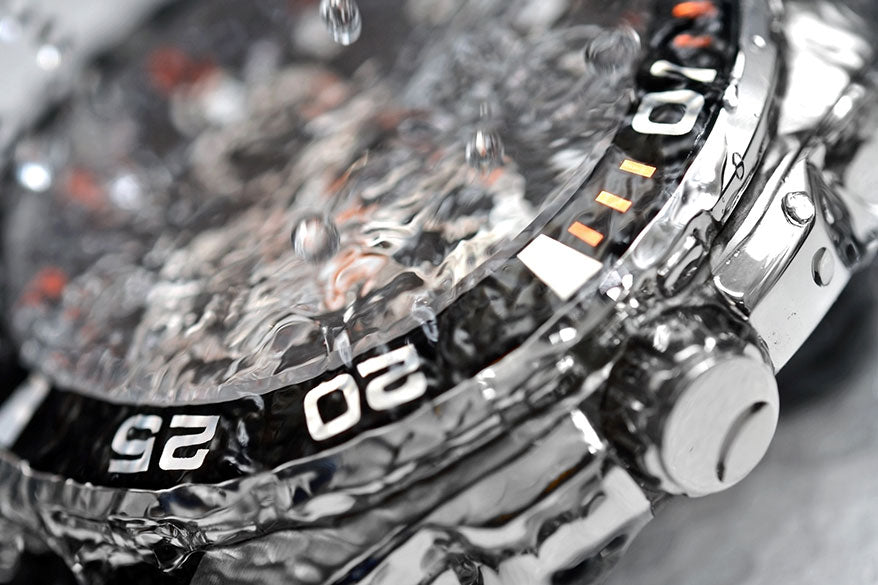Understanding Water Resistance

We get questions all the time from customers wondering exactly how water resistant their watch is. “Can I shower with it on?” “Can I jump in the pool with it on?” The answers aren’t’ as easy as one would think. Just because a watch has the words “water resistant” on it, it doesn’t necessarily mean you can jump in the pool and swim laps or do some snorkeling.

What matters most when is the depth to which the watch is water resistant. This is always indicated on the watch (if it is water resistant), sometimes in meters, feet, ATM (atmospheres) or Bar. Water resistance is all about how much pressure a watch can withstand before moister will get into the case or movement. Most water resistant watches offer anywhere from 30 meters to 600 meters of water resistance -- and even more for professional instruments -- depending on the watch.

The factors that contribute to water resistance include screw-down crowns, O-rings and gaskets, screw-down case backs and more, depending on how deep the watch can go. To know what you can do while wearing your water resistant watch, you may want to understand the translations of the various methods used for indicating depth. To keep it easy, if a watch is water resistant to 10 meters, it equates to 33 feet, 1 bar or 1 ATM. Most water-resistant daily wear watches are water resistant to 30 meters, or approximate 1,000 feet, 30 Bar or 30 ATM.
Depending on the watch, you will find the “water resistance” depths indicated either on the dial or the case back. If your watch doesn’t say Water Resistant to a particular number, then it is not water resistant, and you should probably remove it when running through a rainstorm. In rare instances a watch may say water resistant but have no depth indicated. That usually means it is protected against humidity and might withstand the rainstorm but not a quick swim in a pool.
A quick rule of thumb for water resistance: A watch that says “30 meters” can withstand some splashing. One that says “50 meters” can withstand short swims in the pool or ocean. A watch that is water resistant to 100 meters can join its wearer in the water for a few hours and is safe to snorkel with. Once you hit water resistance to 200 meters or more, you can take the watch diving with you.
According to the Diver’s International Organization for Standardization (ISO), dive watches must meet the ISO 6425 standard (water resistance to at least 100 meters). Serious divers will want water resistance to 200 or 300 meters. The deeper the watch can go, the more professional it typically is, offering added features like dive-bezels that measure elapsed time under water, extension bracelets or clasps for fitting over a dive suit, helium escape valves and chronometer certifications.

Other important things to note when it comes to water resistance, is shock resistance. We don’t recommend diving off of a board into a pool with a watch that is just 30 or 50 meters resistant. The shock the watch receives when it meets the impact of the water, along with the immediate pressure change, could lead to potential damage. Similarly, we don’t recommend showering with a lower-depth water-resistant watch, because the abrasive chemicals in soap can lead to erosion of the rubber gaskets. We also recommend that when you have your watch serviced – by an authorized service retailer or facility -- they replace worn gaskets (even if they are just changing a battery).



